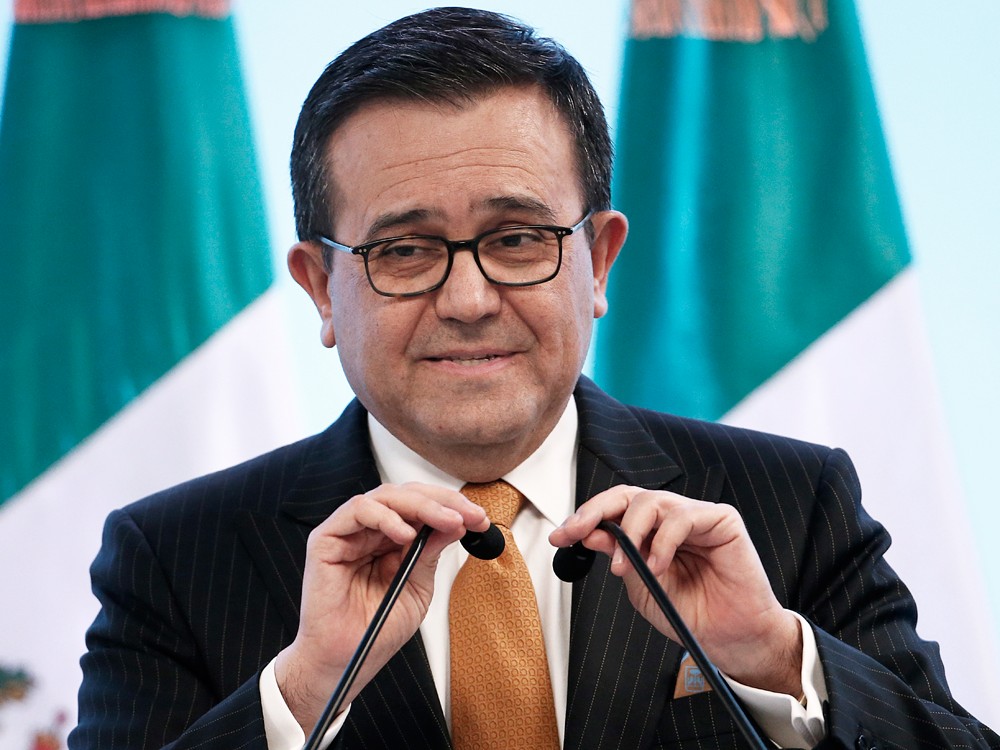Mexican trade negotiators said Friday they will be back in Washington in a few days for a third straight week of two-way NAFTA talks with the U.S.
Whether Canada will finally join the other countries at the table, or stay on the outside looking in, remains unclear.
The meetings tentatively set for next Wednesday or Thursday will probably deal in part with a red-line issue for Canada — the U.S. demand for a “sunset clause” that would require NAFTA to be re-approved every five years, said Mexican officials.
They insisted Canada had to be involved in a final deal — although they also said they’ve already resolved several NAFTA chapters alone with the States — but no one could say if Canadians would show up next week.
One American source with knowledge of the negotiations said definitively they would not.
Jesus Seade, top negotiator for Mexico’s president-elect, said Canada will “absolutely” be back in formal talks, if not next week then perhaps the week after.
“There are key issues between the U.S. and Canada,” said Seade outside the offices of the United States Trade Representative, all but next door to the White House. “And they have to be resolved because this is a trilateral. And the train is departing the station very soon. So we are hoping (Canada) will be with us.”
Ildefonso Guajardo, Mexico’s economy minister, told reporters he and his colleagues talk to Canadian Foreign Affairs Minister Chrystia Freeland “every day” and that NAFTA’s northernmost partner “has to” be brought back into the formal negotiations — but also didn’t suggest a timeline.
Canadian officials likewise did not predict when they might be back in formal talks, but said any notion that they have been frozen out is erroneous. They say the NAFTA trade deficit frequently bemoaned by President Donald Trump concerns Mexico, making resolving issues with that country of high importance for the Americans.
“This is a trilateral negotiation — as both the Mexicans and Americans have reiterated yet again in the last few days,” David McNaughton, Canada’s ambassador to the U.S., said in a statement. “Anyone who says otherwise is misinformed. Minister Freeland and I are in regular contact with our counterparts, and we look forward to continuing negotiations this month.”
He said the U.S. and Mexico have some issues to resolve, mainly revolving around rules for the content of cars exported duty-free under NAFTA, and Canada welcomes progress being made on that front.
“That said, our position from the start has been that we want a good deal, not any deal,” said McNaughton.
The train is departing the station very soon. So we are hoping (Canada) will be with us
Some of the anxiety around the two-way Mexico-U.S. “round” of NAFTA stems from comments made by U.S. Trade Representative Robert Lighthizer last week. Lighthizer predicted he would reach an agreement with Mexico soon, which he hoped could then be used to leverage “compromises” from Canada that had not been forthcoming thus far.
It’s widely believed the main sticking point between the U.S. and Mexico is the American demand for new rules that would require up to 45 per cent of vehicles imported to the States to be made in factories that pay at least $16 an hour — a bid to stem the flow of jobs to Mexico.
Some industry sources say that could lead to the rapid shuttering of some factories, making it a thorny issue for Mexican negotiators.
But two industry experts said Friday the U.S. wage demands are unlikely to trigger dramatic changes, for a variety of reasons.
Many of the vehicles exported from Mexico to the U.S. are only produced there, meaning production couldn’t be easily switched out of Mexico, while wages actually make up a relatively small five to 10 per cent of a vehicle’s cost, said Joe McCabe of AutoForecast Solutions in Chester Springs, Pa.
As well, higher pay would both increase domestic Mexican demand for cars and attract more skilled workers to the industry, offsetting the negatives of higher costs, he said.
“From the Mexican point of view, you’d think they’d be asking for this,” McCabe said.


























